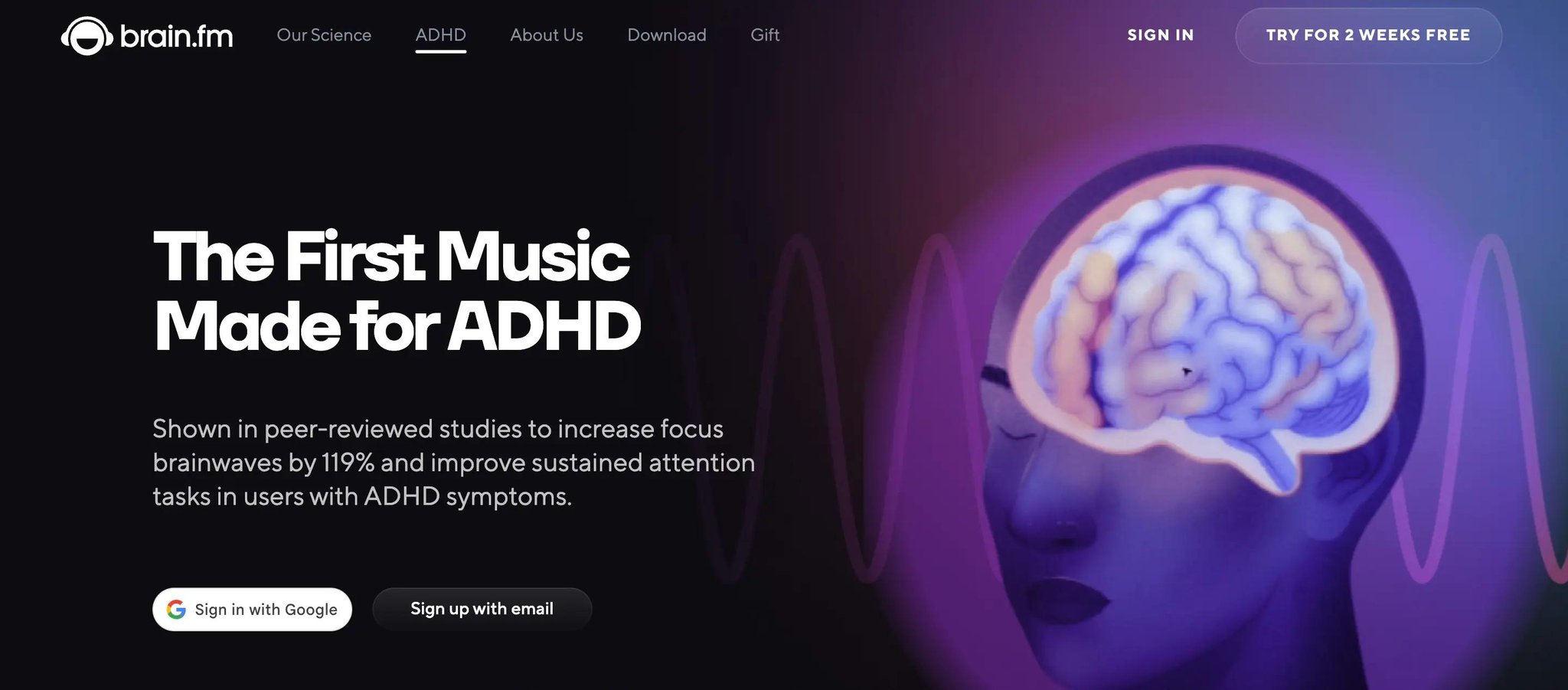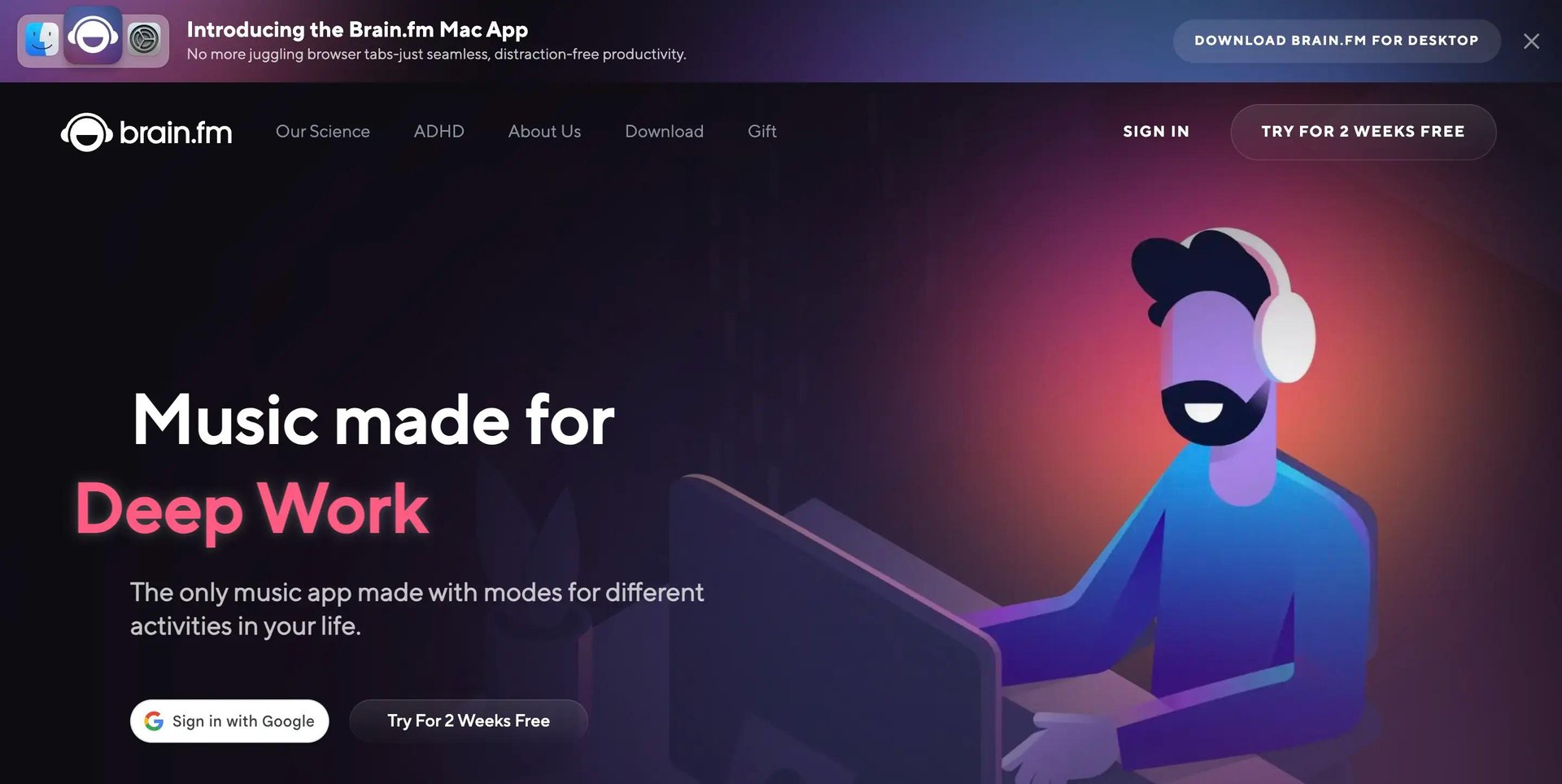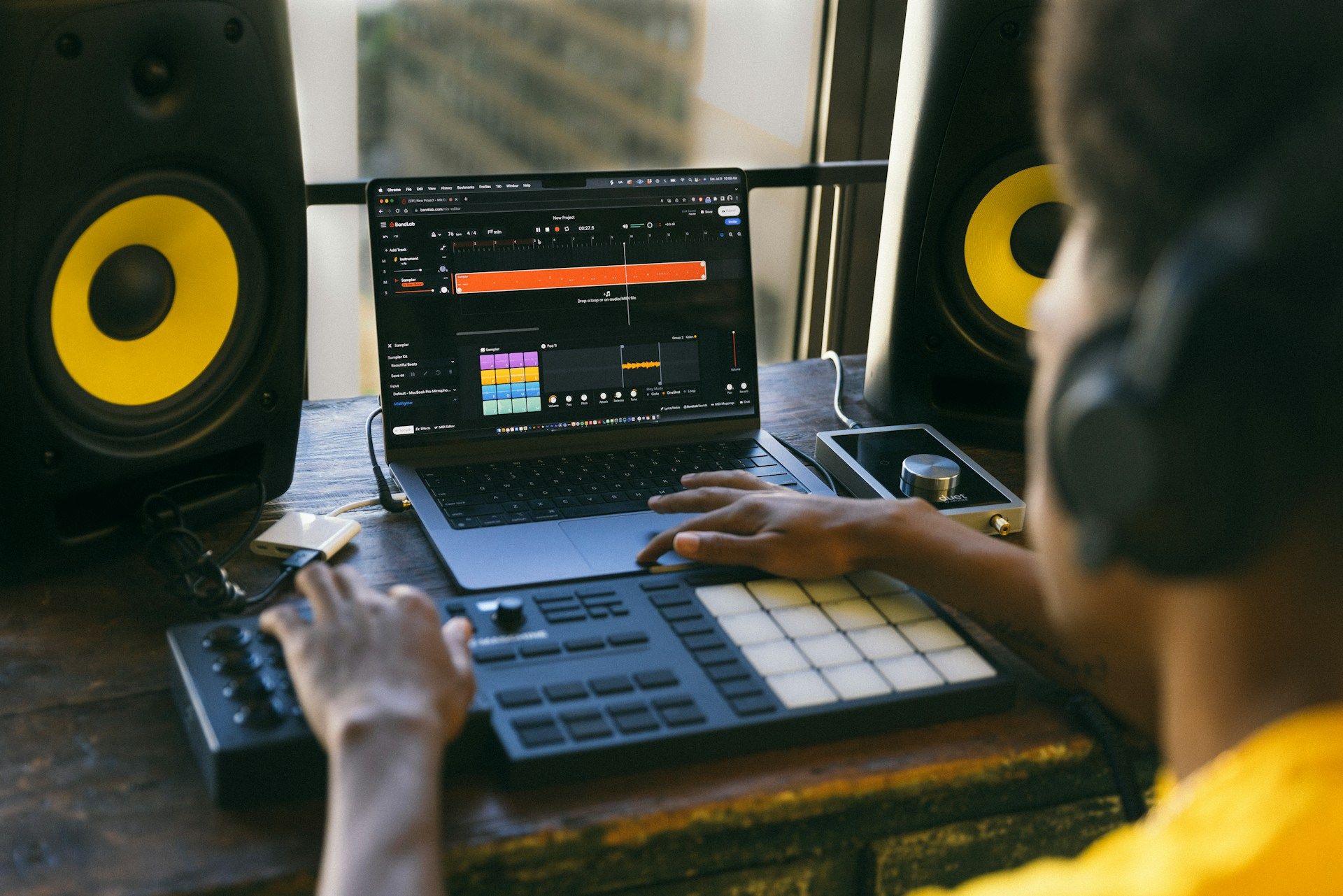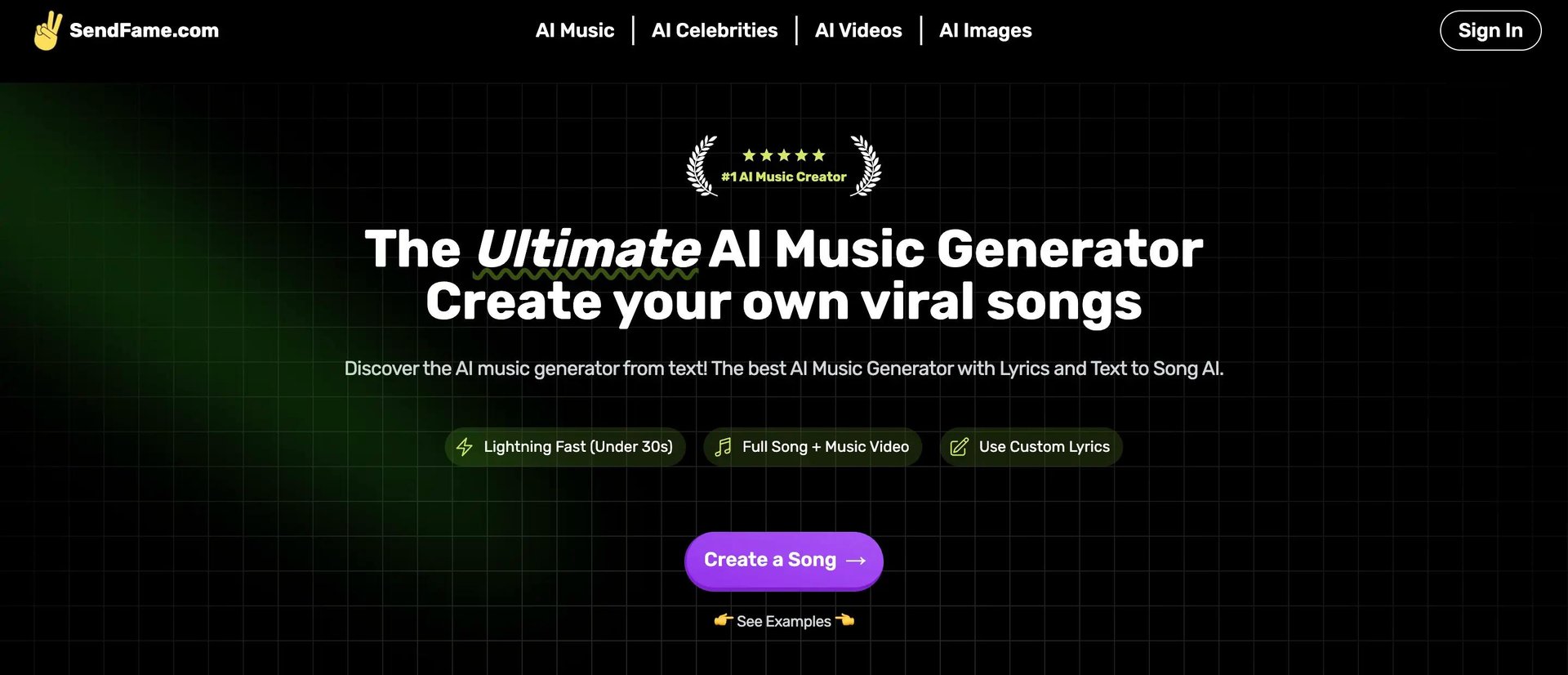12 Best AI Video Generators You Should Know




Explore the top 5 Brain.fm alternatives in 2025 that deliver focus-boosting audio without the subscription hassle.
Consider you’ve got a deadline looming, and you know you need to focus to get your work done on time. So, you plop on your headphones and press play on your favorite Brain.fm playlist. Within minutes, the anxiety that clouded your mind lifts, and you’re transported to a soothing soundscape that helps you concentrate. But what happens if you need to switch things up? So, How to Make AI Music Covers?
Whether you’re seeking new sounds to spark creativity or you’ve simply grown tired of Brain.fm, this guide highlights the best Brain.fm alternatives to help you stay focused. To help readers know the Top 5 Brain.fm Alternatives in 2025. A straightforward way to uncover fresh music for your brain is to use an AI content maker like Sendfame’s AI music generator. This tool can help you achieve your goals more quickly, allowing you to focus on what truly matters, such as completing your project and enjoying the rest of your day.

Brain.fm is a functional music platform that utilizes AI-generated soundscapes specifically designed to enhance cognitive states, including focus, relaxation, sleep, and meditation. Unlike traditional music streaming services, Brain.fm doesn’t offer songs for entertainment; it provides scientifically engineered audio that interacts with your brain to promote a specific mental or physiological outcome.
Founded by scientists and backed by neuroscience research, Brain.fm sits at the intersection of technology, psychology, and acoustic design. He is used by remote workers, students, athletes, and even therapists to sharpen their focus or calm their minds.
Brain.fm stands out because it isn’t just background music. Its claim to fame lies in its scientifically validated sound patterns, which are generated using proprietary AI algorithms to affect neural oscillations in your brainwaves. Here’s how it differs from regular music apps:
Brain.fm offers a selection of sound “modes,” each tailored to stimulate a specific neurological response:
Enhances concentration, particularly for tasks such as work, study, or deep thinking. Uses fast-paced, minimal-melody soundscapes that keep the brain alert and sustained in a high-attention state.
Designed to reduce stress and anxiety by slowing brainwaves and promoting calmness without inducing sleep.
Uses slow, rhythmic, low-frequency sounds to help users fall asleep faster and achieve deeper sleep stages.
Features gentle, grounding textures that help guide users into a mindful state or breathwork routine.
Brain.fm’s audio is not composed by traditional musicians. Instead, it is produced by AI composers under the supervision of cognitive scientists and audio engineers.
Here’s a simplified breakdown of its technical process:
Brain.fm is scientifically validated, not just theoretically inspired. The team has published peer-reviewed research and worked with:
Studies conducted using Brain.fm music has shown:
Available via web, iOS, and Android apps.
Users can choose fixed time blocks (e.g., 30, 60, 90 minutes), ideal for Pomodoro or productivity sprints.
Sessions can be downloaded for offline use.
Used by remote teams, startups, and productivity coaches.
Writers, coders, students, and creatives use Brain.fm to enter “flow state” faster and stay focused longer without needing caffeine or stimulants.
Therapists and individuals with anxiety find its structured, sound patterns more effective than generic “lofi” or spa music.
Users with insomnia or irregular sleep cycles report falling asleep more quickly and waking up less frequently.
While not a guided meditation tool, Brain.fm is often paired with activities such as journaling, breathwork, or mindful breaks.
Despite its strengths, some users look for Brain.fm alternatives due to:
Some find the audio too repetitive or sterile over time.
A recurring fee may not be affordable for casual users.
Not ideal for those who draw energy from melodic or rhythmic patterns.
No native visual elements for creators, unlike platforms like SendFame.
Users who want lo-fi, ambient jazz, or cinematic music may feel restricted.

Does the platform rely on neuroscience, psychoacoustics, or cognitive studies to shape its sound design?
Brain.fm isn’t just ambient music; it uses neural phase-locking and rhythm entrainment techniques to influence your brainwaves. A worthwhile alternative should either utilize scientific frameworks to inform sound design (e.g., circadian rhythms, EEG studies) or collaborate with neuroscientists, therapists, or psychologists during development.
Mention of research partnerships, Evidence from fMRI or EEG studies, Whitepapers, or lab-tested claims
The tool employs vague terms like “healing energy” without credible research support.
Does the tool adapt in real-time to your behavior, environment, or goals?
Your cognitive state fluctuates throughout the day based on time of day (circadian rhythm), Current energy level, Emotional state, and Task complexity. Brain.fm creates structured sound, but alternatives like Endel dynamically adjust to changing conditions (e.g., weather, heart rate, location). The more context-aware the system, the more likely it is to align with your needs in the moment.
Adjusts based on time (day/night), Syncs with wearable data (heart rate, steps), and Changes intensity based on session progress
Does the platform offer audio environments designed for a specific outcome (e.g., focus, sleep, calm, creativity)?
Entertainment music is emotionally rich, but it can distract the brain. Brain.fm avoids vocals, hooks, and emotional swells for this reason. Alternatives should also clearly distinguish between functional sound (for outcomes) and expressive music (for enjoyment).
Focus, Relax, Deep Work, Sleep, Breathe. Explicit descriptions of what the sound is meant to do. Session timers or presets (e.g., 25-minute Pomodoro, 90-minute deep focus)
How much control do you have over the type of sound you hear?
Some users prefer minimalism (white noise, ambient drones), while others need rhythm (lo-fi beats, nature layers). Brain.fm is somewhat rigid in genre, so look for tools that allow you to mix sounds (e.g., combine rain + piano), choose moods (e.g., uplifting, neutral, meditative), and Select genres (e.g., ambient, jazz, cinematic)
Custom mix tools (like in Noisli), Sound palette adjustments (e.g., bass, intensity, tempo), Genre-based soundscapes or compositional modes
Does the tool specialize in the kind of experience you need?
Brain.fm excels at functional work music, but may fall short in areas such as sleep recovery tools like Snoozy, Creativity and ideation tools like SendFame, and Meditative sound design for therapists or trauma recovery (e.g., Wavepaths). Before choosing,
Do you want to eliminate distractions? Are you trying to relax after work? Is my goal deep focus, emotional balance, or mental clarity? Match your goal to the tool’s core offering, not just its marketing.
If you're a creator, business, or app developer, can you legally use the sound content in public-facing work?
Brain.fm is for personal use only. Alternatives like Mubert or Soundraw offer Royalty-free licensing, developer APIs, and custom BGM solutions for platforms or products.
Can I use this music in my YouTube videos? Can I integrate this into my meditation or fitness app? Do I have full distribution rights?
Price vs. Value Trade-off While Brain.fm requires a paid subscription, many alternatives offer generous free tiers, One-time licensing for creators, In-app purchases, or time-based credits. Don’t just compare on price; evaluate session limits, Offline access, Sound quality, and Personalization levels.
Release your creativity with SendFame! Create stunning AI celebrity videos, music tracks, and images in seconds that will wow your audience. Generate hyper-realistic videos of your favorite celebrities delivering personalized messages, craft original songs with professional-quality vocals, and transform static images into dynamic videos, all with just a few clicks. No technical skills required, just your imagination! Join 130,000+ users already creating viral-worthy content. Try SendFame today and turn your creative ideas into reality instantly.

SendFame is a versatile tool that combines audio and visual elements to help users overcome creative blocks. While SendFame is known for generating AI celebrity videos and songs, its real power lies in using these audio-visual assets to enhance creative performance. The platform can create personalized audio and visual content in seconds.
For example, you can make a song with your favorite celebrity and then pair it with a hyper-realistic video of the celebrity delivering a personalized message to you. This unique approach to tackling creative blocks goes beyond audio. It’s beneficial for breaking monotony and reinvigorating daily workflows.
Endel is a science-backed sound wellness app that generates personalized sound environments for focus, sleep, relaxation, and movement. Unlike playlist-based platforms, Endel creates ambient soundscapes in real-time based on your circadian rhythm, weather, heart rate, and the time of day.
Noisli is a productivity tool that allows users to mix and match background noises such as rain, wind, leaves, white noise, or café chatter to create the perfect atmosphere for focus or relaxation. It’s not music-based, but sound-based, ideal for blocking distractions or simulating a preferred environment.
Writers, students, co-working spaces, or neurodivergent users who prefer sound over music.
Mubert offers an infinite supply of AI-generated music streams that adapt to your task or mood. It provides both individual listening experiences and tools for developers or businesses to integrate royalty-free music into their apps, products, or content.
Snoozy is an emerging app designed to improve sleep quality, promote mental clarity, and assist with guided relaxation. It specializes in binaural beats, soothing soundscapes, and guided audio sessions for different stages of rest and mindfulness.
SendFame gives you the tools to quickly and easily create impressive AI covers and celebrity messages. With this innovative platform, you can generate hyper-realistic videos of your favorite celebrities delivering personalized messages. You can also craft original songs with professional-quality vocals and transform static images into dynamic videos, all with just a few clicks. Best of all, you don’t need any technical skills. Just let your imagination run wild! Join over 130,000 users already turning their creative ideas into reality with SendFame.
Create Epic
SendFame